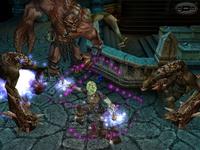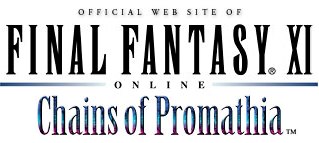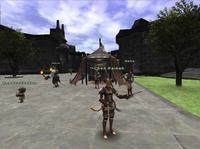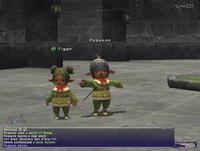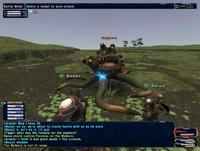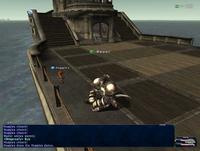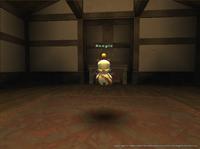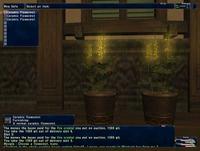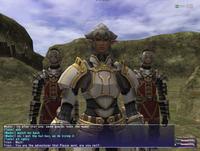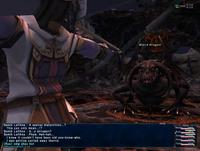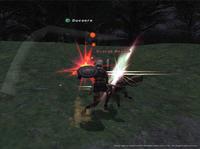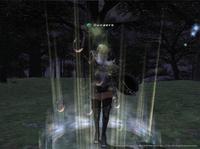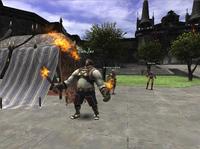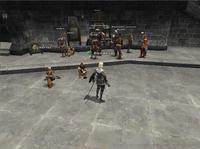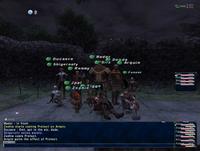|
|
|
Main News Forums Games Games Database Top 100 Release List Support Files Features Reviews Previews Interviews Editorials Diaries Misc Download Gallery Music Screenshots Videos Miscellaneous Staff Members Privacy Statement |
Final Fantasy XI Online Review
As a wee nerdling, I cut my proverbial teeth on the NES classic Final Fantasy. Since then, I've played most of the more recent incarnations, dealing with the likes of Cecil, Terra, and Cloud, enjoying the malformed characters and the over the top dramatization of Japanese culture distilled into fantasy format. When I heard that there was going to be an online FF, I was at first resistant. "Everquest with Chocobos?", I thought to myself. Luckily, FFXI has proven to be more than just EQ with chocobos. While there aren't any features here that really break from the pack and shock you with their originality, FFXI shows you what can happen when a game is very carefully planned, well executed, and then beta-tested by the nation of Japan for two years. Getting Started Before we get into the game itself, I'd like to talk for a moment about setup and installation for FFXI. As you may already be aware, it is a somewhat substantial process. In addition to installing four discs worth of content (it took me about 45 minutes), there is a lot of content to download from the PlayOnline service before you're going to be able to take your first steps into Vana D'iel. I have a cable modem, and the download and install time took me roughly an hour and fifteen minutes. So, from the opening of the box to actual playtime can vary between an hour and a half to three hours, and I'm not even really considering the possibility that you might be on a dial-up connection. Consider yourself forewarned.Another sticky issue that has many people up in arms is the unique decision by Square/Enix to make your assignment to a world server random once you've created your character. If you're planning on playing this game with other people (kind of the point of a MMOG, huh?) you're going to have to make an in-game purchase of a "worldpass", usually for around 1500 gil or so. The worldpass allows up to 5 people to hop onto the same server as the one you purchased the worldpass on. This decision is ostensibly an attempt by Square to do automatic load balancing on their servers. However, you can pretty much get around this by recreating your character a bunch of times until you hit the server you want. I personally think this was a poor choice on their part, and it makes for a bad first impression with new players.
Creating a character Once you get past the water torture of installation and patching, creating a character is a pretty simple process. You choose your race and gender, character class, name, and go. Races in FFXI are pretty important, and affect your stats heavily. From the standpoint of pure power, we start first with the all-male Galka race. They're heavy bruisers that are obviously built for combat. Then we have the strong Elvaan race, renowned for their beauty and swordsmanship. The Humes (Humans, natch) are the balanced midpoint, good at just about everything. The sleek and cute Mithra cat people (all female) are graceful and natural thieves, but a little weak. Finally, the extremely adorable Tarutaru people round out the five races. These diminutive folks are the best spellcasters in the game, but obviously weak from an hp perspective.When you pick a race/gender combo, you get to see them cavorting around a sunny field while you pick your identifying features. It's somewhat distracting, and you don't always get the best view of the attribute you changed on the character. There are also, regrettably, only a finite number of choices you can select when making a character of a given race/gender combo, so you're likely to see some twins during your stay in Vana D'iel. Character classes are called "Jobs" in Final Fantasy, as they've been called throughout the series. The six jobs you can choose from at character start cover all the bases, and are the original six jobs you could select in the original FF game for the NES. So, from top to bottom we have the Fighter (Melee/Tank), Thief (High end DPS, High Defense), Monk (DPS), Black Mage (Nuke), White Mage (Healer), and Red Mage (Catch-all Spellcaster). Which race/gender combo and job you pick dictates what stats you end up with, and choosing the "correct" race for your job will make you a better avatar to start with. (IE, Galka Fighters are better than Tarutaru Fighters starting out.) Once you're in game, you have a multitude of choices you can make regarding jobs. First off, at any time you can switch jobs at your Moogle House (more on that below). You don't keep any of the experience that you had in a previous job, but you don't lose it either. The job is just "switched off" and the new one "switched on". In this way you can try out the different jobs to see which one is right for you. Once you reach level 18, you can complete a quest and "sub-job" in a second job. This essentially means you can have two jobs turned on all the time, gaining benefits from both. Once you reach level 30, you can begin to advance in some of the advanced jobs, which have quests of their own to get going. These jobs are the coolest in the game and include icons from the FF series like the Dragoon and Summoner. The jobs system is somewhat confining in that it forces you into a very specific niche with no room to change, but with the addition of subjobbing and advanced jobs there are nearly limitless combinations you could choose for your character. The final decision once you have chosen your race and job is which city you'll be allying yourself with. Each race has a nominal "home" city, and if you begin in your home city you receive a ring right off that gives you some nice boosts to your stats. The three city-states are Windhurst, home to the TaruTaru and Mithra, Bastok, home of the Humes and Galka, and San D'Oria, home to the Elvaan. You can choose to begin wherever you wish to ensure that you can hook up with your friends. Besides providing an adventuring base, the city-states also play a role in drawing the player into the ongoing storyline of Vana D'iel.
Graphics & Game World Final Fantasy XI looks really good. It's not Galaxies good, but it's pretty darn sexy for a game that's almost two years old at this point. The look of the world is extremely polished, with every zone having personality quirks that make them easy to enjoy even during the many hours of leveling you'll be doing. More about that in a second. All of the buildings and characters have a slightly cartoony look to them (as befits a final fantasy game), but it's a very believable cartoony. The anime sensibilities of the characters are a refreshing change from other MMOG designs, and the impressive grandeur of even the smallest structure adds dramatically to the larger than life mentality of the game.The monsters you face in the field capture the grandeur of the game as well. As Final Fantasy is a pure PvE game at this point in it's life cycle, the mobs will be your only adversaries. Luckily, the creatures you can find in the forests and ruins of Vana D'iel are intriguing and amusing beasts. A good deal of care was put into the character designs of everything from the smallest bunny-cat to the mightiest dragon. The orcs are my particular favorite Final Fantasy beast, as Square has put a unique twist on these now familiar creatures. Instead of the normal brutish humanoid with tusks and bad breath, these creatures resemble giant tailed worm creatures with smooth heads and fearsome teeth. They're no less bad tempered than the regular version though, so make sure to steer clear at lower levels. The zones are also interesting from a design point of view. Streams run through some of them, side trails lead you away from the main paths, and tiny outposts give the zones character. The dungeon zones are twisty cavernous ruins or natural phenomenon that keep the surprises coming at you without just tossing a bunch of mobs at you in an attempt to get you to have fun. Every bend in a passage can lead to a nice little niche area, with most dungeons blending indoor and outdoor elements well. Cities have a similar variety of character. The three main cities are broken up into several zones, logically laid out (shopping areas here, tradeskill guilds there), and pleasant to look at. Every city has a colourful cast of characters ready to provide you with quests of varying immersiveness. Some of the best characters are the city guardsmen, who will offer you "mission" style quests that draw you into the greater conflict between the nation-states of Vana D'iel. The other piece of world building that Final Fantasy XI does is very welcome, and singles out this game as a Final Fantasy. The cut-scenes, at the beginning of the game and throughout at various stages of character growth, quest acceptance, and mission accomplishment, place your character visibly into the world of Vana D'iel. There your character interacts with well-written characters that you'll encounter in the various city-states. These in game cut scenes go a long way towards pulling you as the player into the world of Vana D'iel. The in-game economy is very NPC-driven. NPCs pay out rewards for quests, grant items, and in the form of shops act as money sinks as well. There is also a thriving player-run economy in Final Fantasy XI: The Auction Houses. Each city has an auction house, access to which is given in at least two of the several zones that make up each city. The auction house is something of a misnomer, as you're not actively bidding against other players for items. Here's how it works: You want to sell a sword that you just looted off of a creature in the field. You head to the auction house and look it up in the "Weapons" section. There, you have the option of buying, selling, or viewing past sales numbers. By viewing past sales numbers you can see the last ten or so transactions that took place for the sword, and how much people paid for it. You see that the sword generally sold for around 300 gil, so you put it up for auction at 275 gil. That done, you move on to buy yourself a better pair of boots. Here, the process works much the same. You go in to view the boots you want, and see that generally the boots have sold for about 150 gil. So you put up an offer to the auction system of 120 gil, hoping to get it on the cheap. That doesn't go through. So, you up your price to 150 and sure enough you get your boots. The auction system works on an "as available" basis, and even if the price you offered is more than the auctioner was requesting the amount you offer is what goes through. IE: If there is only one sword on the market and the auctioner put it up for 200 gil, if I offer 250 gil the auction system will sell me the sword for 250 gil. Thus, the auction system rewards "throwing low" to strike a potential bargain. So, you've won an auction. If you have room in your inventory, it goes there. If not the item goes the same place that the money you receive from auction sales goes: The Moogle House! The most Final-Fantasy-ist aspect of the game is the highly amusing Moogle (Kupo!) house. Instead of player housing that you have to purchase (ala SWG), players begin the game with their very own Moogle house. The house is "instanced". That is, you are the only one who can access your house. Every city has a "housing area" zone boundary through which you pass to enter your Moogletastic home. Inside the house is your very own Moogle servant, who fulfills a variety of roles for you throughout the game. In addition to serving as an extra storage container, the Moogle accepts deliveries for you from the auction house and other players. He can look after plants that you leave in his care, and generally acts very cute. Your Moogle house is also a way to personalize the game for yourself and your character. Throughout the game you will have opportunities to obtain furniture, paintings, and other trappings for you Moogle House by buying them from the auction or through questing. The trappings do basically nothing for your house, but...they're shiny!
Sound & Music What can I say about the music? Nobuo Uematsu has been shaping the face of gaming music since I was knee-high to a grasshopper, and the quality and talent the man shows in every piece he crafts is simply amazing. Like all MMOG music the score of FFXI can begin to get old after many hours of extended playing, but I never got tired of it during the time I was reviewing the game. If you're a fan of Final Fantasy music, you'll love the score for FFXI.The sound effects have been given a good deal of consideration as well. Again, the tragedy of Massively Multiplayer games is that sounds which are interesting and appealing the first dozen times begin to get very old. Battle sounds (slashes and grunts) are subtle and generally never got on my nerves, and the spell effects are extremely enjoyable the first several times they're used. The sounds used when Summoners call their creatures to them are particularly enjoyable, and I highly recommend hanging out in one of the newbie hunting grounds if only for the chance to see a Summoner put on a show.
Gameplay & Interface Questing in Final Fantasy XI is very similar to the questing systems of other Massively Multiplayer Games. Various NPCs scattered throughout the zones of the game can offer you the opportunity to assist them in one way or another. Quests range from simple repeatable collection quests where you gather x number of items for an NPC and are rewarded with a specific amount of gil, to multi-legged quests with interesting characters and a real sense of purpose. Most of the simple quests are just easy ways to make money, but the larger quests do a very good job of involving you in the game world. There also exists a subset of quests called missions, which let you become a true citizen of your adopted city-state.The city-states actually play an interesting role within FFXI. Unlike the free agent status that adventurers enjoy in most MMOGs, players in FFXI are encouraged to join into the conflict between the three cities attempting to wrest control of Vana D'iel. The Mission quests, given out by the city guardsmen, start relatively easy with something as simple as finding a somewhat rare drop off of a common mob, and scale up to a titanic fight with a monstrous beast or the claiming of a high-level zone at the higher levels. These Missions all serve to involve the individual players in the ongoing storyline of the player's adopted cities. Even beyond the missions, players can sway the power of the cities throughout the continent by participating in the "Conquest System". To participate, players speak (again) with the city guards and are ensorcelled with a simple charm called "Signet". Once Signet is cast upon your character, every monster that you defeat in the field of battle counts for your city-state on the zone in which you battled the monster. Every few weeks the monster kills for each city-state are tallied, and the city-state with the most kills in a particular zone is considered to "control" that zone. Players allied with that city state then get an experience bonus while killing mobs in that zone, making player participation in the Conquest system a very lucrative offer. Additionally, while players have Signet cast on them they gain the ability to loot crystals from fallen monsters. These crystals are the lifeblood of crafting in the game, and a very valuable commodity. Crystals come in various elemental types (Fire Crystals, Water Crystals, etc.) and allow players to participate in the crafting guilds. Before you can begin crafting, you must journey to the headquarters of the Guild you are interested in joining. Each of the major cities plays host to some of the guild headquarters, but each city does not possess a headquarters for each guild. For example, a trip to San D'Oria would be necessary in order to join the Blacksmithing guild. Once you've joined a guild you can speak to NPC members of the guild who will provide you with recipes. Recipes are simple combinations of a crystal and various objects that combine to create a usable item. These simple recipes can create everything from weapons and armor to food and spell scrolls. The crafting system here is only marginally more involving than the crafting system of Everquest, and doesn't have a whole lot of personality. It is, however, a very good way to make money quickly. Several items craftable at relatively low levels are in near constant demand at the auction house and will fetch a pretty penny. A point that some folks have been sore on is the control scheme for FFXI. Because of the game's obvious console roots, the initial setup is somewhat daunting. The unconventional control style makes a good deal of sense if you consider the needs of a port from the PS2 platform. There is an alternate control scheme called "Compact Keyboard" which uses only a very few keys to do everything you need to do, however, and makes the game much more straightforward to play. It will take longer to get used to than some other MMOG's control schema's, but after a few hours of running around the keyboard layout becomes almost second nature, and you'll find yourself doing completely without the mouse. There is, of course, an option to use a gamepad with the game if you simply can't handle the keyboard. The User Interface of the game has similar limitations, given the needs of the control system, but is actually quite easy to use. A pair of drop down menus in the upper right hand are all that you need to use the game when not in combat, and the combat menus are well laid out and can be moved nimbly through by even the most novice of players.
Combat, Spellcasting, and Death Armed conflict in FFXI is distinctly Everquest-like, with some very nice changes. Like in Everquest, you "lock on" to a target, and then enter a combat mode. Unlike EQ, the combat mode in FFXI is much more distinct and is actually somewhat awkward to get out of. This can be very annoying if you're taking on a tough mob. Running away from a tough enemy is basically out of the question. Still, you can move nimbly around the mob while in combat, and different attack angles offer differing damage opportunities to the attacker. (The Thief's backstab, for example, can only done from behind.) Each weapon has a skill associated with it, which is raised through use. At various plateaus in your skill with a weapon, you gain new special moves which can be used by expending points from your "TP" bar, a third bar along with HP and MP. The TP Bar fills by taking and dealing damage. Once the bar is full, you can use the special weapon moves, each of which has a distinct "type" of damage associated with it.These damage types affect another interesting spin on the combat system, called chaining. After a player uses a weapon skill of a particular type, there exists one or two other weapons skill types that can be "chained" onto the previous attack by other players. These additional weapon skill uses produce new and effective attack types and additional damage, and can be chained beyond two players for as long as a group can sustain the chain. As an example, player 1 uses a club skill called Shining Strike, which has the Thunder type. Then Player 2 uses a sword skill called Burning Blade, which has the fire type. In addition to the damages and types of the actual attacks, a different type and damage is applied to the monster, another fire effect in this case. Careful use of weapon skills and good teamwork can result in even a low level team of players doing massive amounts of damage in a relatively short amount of time. Spellcasting is fairly straightforward for anyone who has ever played a caster in another MMOG, or ever played a Final Fantasy game. In addition to your "hp" bar, you also have an "mp" bar that dictates how many spells you can cast. Each spell has a different mp cost, with higher-level spells costing more mana to cast, and your mana bar increasing in size as you level. Spells are grouped into "White" spells, "Black" Spells, and then some individual job spells, such as Ninjitsu or Summoning. The White spells are generally healing spells, with some damage over time, status healing, and damage type protection thrown into the mix. Black spells are your basic direct damage types, damage over times, and status changing spells. Spells are learned by using a scroll of the spell, which can be purchased from magic shops and the auction house. Death is not without it's sting in FFXI. You don't leave a body behind, thankfully, so no corpse runs are necessary. You retain all of your equipment unharmed by the journey. You do, however, lose roughly 30% of the xp you currently need to attain the next level. IE: If I need 1000 xp to reach the next level and I die, I lose 300 experience points. At the early levels this isn't much of a sting, but beyond level 5 you can very easily find yourself slipping backwards in levels if you don't keep an eye on your health gauge. The best strategy I found was to kill tough mobs at the end of the xp grind to the next level, and easy ones at the start of the new one. This ensures that though you'll be getting less xp initially, it will be steady and you'll ensure that you don't lose your level.
Character Advancement Getting ahead in FFXI exactly the same as in almost every other MMOG. Grinding. Level after level of grinding. For some reason (perhaps just getting used to it, I suppose) I found the leveling in FFXI particularly onerous. For much of the time I played the game, I was playing with some friends and having a lot of fun. Any time I went out to do any serious leveling on my own, however, I found myself bristling at the need to grind away at the mobs to get the next level in character advancement, weapon skill, crafting skill...there has got to be a better way.
Community (PvP and Guilds) Final Fantasy XI's biggest weakness is in what I perceive to be community building.First and foremost, there are no distinct Guilds as are recognized in other games. Final Fantasy instead uses another structure for allowing groups of people to communicate called Linkshells. A person who wants to get a group of people together (the guild leader) purchases a Linkshell. Within the shell are 64 link pearls, which may be given out to people that the leader wishes to speak to over a dedicated chat channel. Different levels of control over the channel can be maintained, but that's essentially it. All that guild players get in FFXI is a dedicated channel. No recognition, and no way to have a place to call their own. There is currently no Player Vs. Player combat in Final Fantasy XI. This is a feature they have plans to put into place early next year with a free patch. When it is in place, however, they plan on having it center entirely around the city-state conquest system. This is a very good plot decision, but I question the choice on the grounds that many player groups may be spread across many different cities, creating loyalty problems. Further, there are also many player groups that are concentrated in only one city, barring the members of the group from fighting each other. A more flexible approach may have been a good idea. Finally, the biggest flaw in the design of Final Fantasy XI is grouping. A very simple act, to group with other players, right? In FFXI it's a nightmare. Players can only gather into groups of six. Each group of six can associate themselves with two other groups into a group of 18, so larger groups are possible, but the small group size seems very awkward to me. Player Experience is completely dependent on the level of the players in the group. If you have a player who is even 3 levels ahead of you in your group, neither he nor you are going to get anywhere near the experience you should gain from fighting even very tough monsters. Grouping in FFXI almost requires all members of your group to be within one or two levels of each other. This final issue makes good community building almost impossible. While some people would state that the decision was a conscious one to avoid twinking, all this does in reality is ensure that there is a very large barrier to friends grouping with each other. If your friend has even a few more hours a day to play than you do, within a week he's going to be far enough ahead of you that you won't be able to group anymore. This is ameliorated somewhat by the job switching abilities of the Moogles (kupo!), but having to maintain an entirely separate job just to group with your buddies is a huge pain in the neck. I feel that this was a very bad decision and has made the playing experiences of many players less than optimal.
Conclusion All in all, Final Fantasy XI is an above average MMOG. It has a very nice personality, honed by the years of making single player Final Fantasy games. It has a rich and involving backplot, with well written NPCs and cut-scenes to draw you in. The combat is fairly standard, but has enough twists in it to make things interesting. Zones are detailed, quirky places that you find yourself rediscovering every time you wander through them, with interesting and varied mobs to slice and dice.It has some issues, of course, like all MMOGs do. Install time, a clunky interface with no ability to remap it, and an extremely community-unfriendly attitude make FFXI somewhat daunting if you're looking to make this your new home from a previous MMOG. "A nice place, but I wouldn't want to live there." If you've never played a MMOG before, though, I would highly suggest that you give this one a try. It has been built on a very solid single-player foundation and would be an excellent first experience for anyone looking to get into the MMORPG scene.
Rate this title and view comments Game Info Printer Friendly Version |
||||||||||||||||||||||||||||||||||||||||||||||||||||||||
|
All original content of this site is copyrighted by RPGWatch. Copying or reproducing of any part of this site is strictly prohibited. Taking anything from this site without authorisation will be considered stealing and we'll be forced to visit you and jump on your legs until you give it back. |
||




